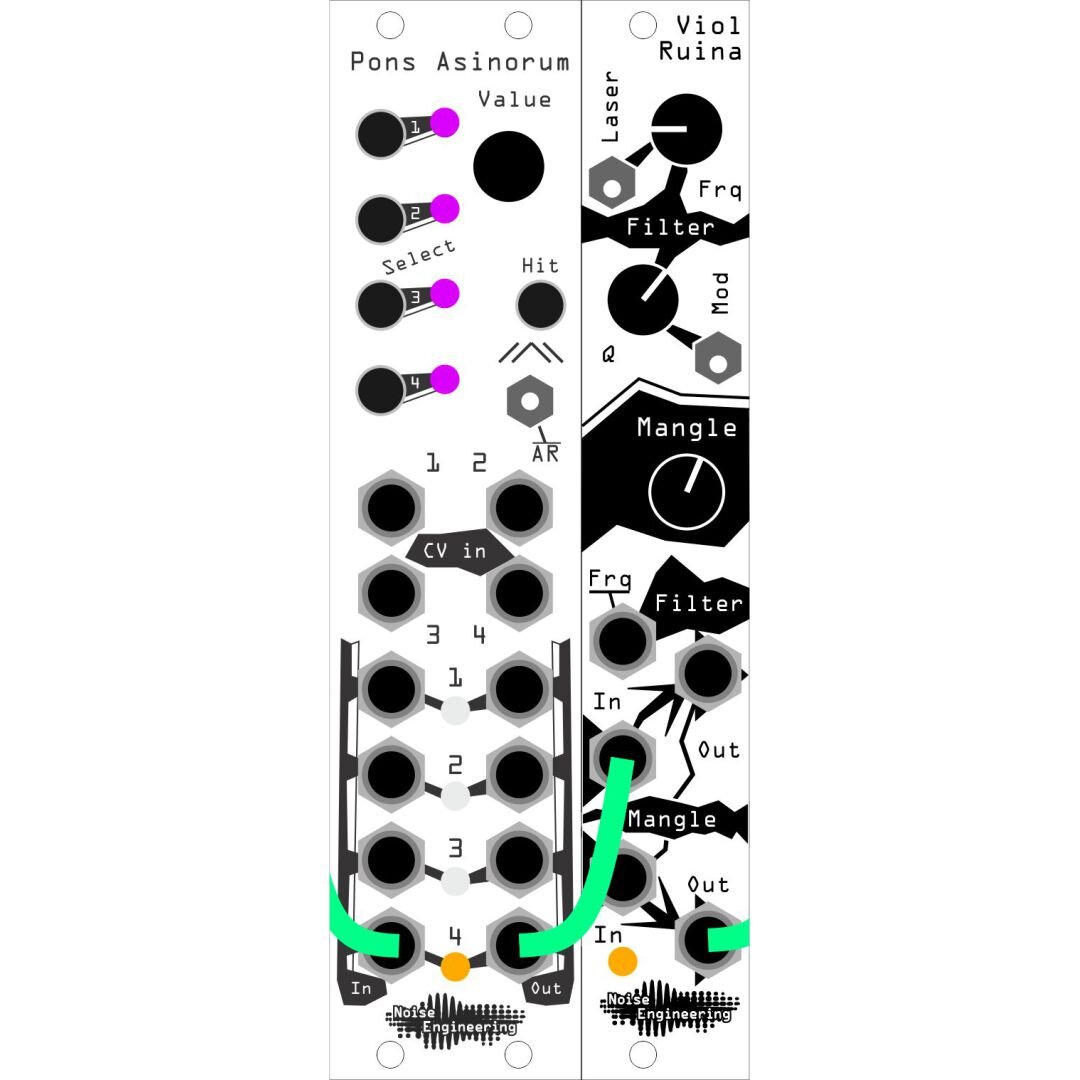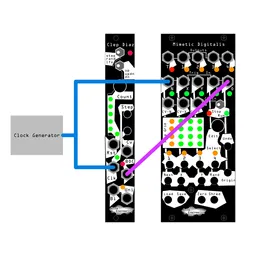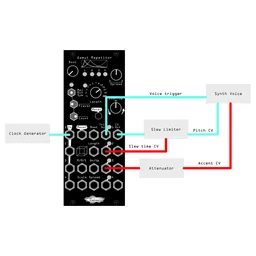Filter pinging is a fun synthesis technique that’s great for creating percussive and organic plucks. It’s a less traditional and more experimental way of generating sound, which makes it a lot of fun, in my opinion. And it’s simple to patch, too! Let’s get started.
Choosing a filter
To start, you need a trigger source and, of course, a filter. Choice of filter here will make all the difference: you need a filter that will self-oscillate at high resonance in order to get a traditional ping going. Just about every filter will sound subtly different, so it’s worth trying it out with a few different filters in your rack to see how they sound; you may find that, just like when using filters for their standard use, you reach for different filters for different ping characteristics. Today, though, I’ll be using Viol Ruina.
Set up the patch
Now, the traditional ping patch routes the trigger directly to the audio input of the filter. However, I find that this often leads to an extra “click” in the sound: you’ll hear the trigger go high and low. To counter this, I generally put a quick decay envelope between the trigger and the filter input. That patch would look like this:

Learn more:
Dial it in
Once we have that patch set up, we need to dial in the frequency and resonance. The filter’s frequency will control the pitch of the ping, and I usually like to start in the lower-mid range to avoid going subsonic, or blasting my ears with painful high frequencies. Next, send in a stream of triggers to the envelope to start pinging. The trick here is to slowly turn up the resonance control on our filter until we get a decaying tone at every trigger. Too much resonance and we’ll have constant oscillation, and too little resonance won’t give us much of anything, other than a click. It can definitely take some fine-tuning, but once you find the right setting, it sounds really cool.
Viol Ruina has an FM input, so we can modulate its frequency and create some more interesting and varied patterns. Some filters even track 1v/8va so we can use this technique alongside a sequencer to create melody lines. Most often, I use filter pinging alongside filtered noise to create snare drums, as I find the melodic plucks are perfect for emulating snare bodies:
Embelish!
I like to do a bit of processing on most of my sounds, and pinging is no different. The VR has built in distortion, so we can crank that and get something interesting within the module itself, but you can try any distortion you have in your system (note: need distortion? Check out the whole Ruina line!). Reverb and delay pretty much always sound nice on anything plucky, so that’s also a go-to for me. Finally, I like to add a little bit of compression to bring out the transient of the pluck and make it a little bit more impactful.
Let’s try this out in a patch! Here, I’m using a completely random and unquantized CV to modulate VR’s frequency, and sending it a complex semi-random trigger sequence to create a strange and only vaguely melodic sequence full of randomness and chaos.






